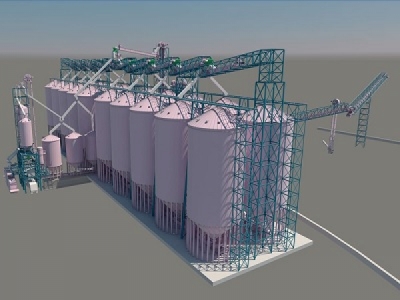
Posted on December 11, 2018
Parrish & Heimbecker is building a new grain export terminal at the Port of Vancouver and that means further investment in inland facilities, increasing delivery opportunities for prairie growers.
The terminal will add 3.5 million tonnes of annual handling capacity to the firm’s existing 500,000 tonnes of capacity at its joint venture facility currently operating at the site.
It will be the second new grain export terminal built at the port since the 1960s. The other one is the G3 terminal currently under construction, which will add eight million tonnes of handling capacity to the West Coast by early 2020.
Construction on the P&H facility has begun and is scheduled for completion in December 2020.
“We see this as an investment in the supply chain to connect Canadian farmers with customers around the globe as efficiently as possible,” said Casey McCawley, vice-president of west coast operations for P&H.
Jeff Nielsen, chair of Grain Growers of Canada, said the announcement is “very encouraging.”
“We are growing more grains and we need better export facilities,” he said.
“With the signing of the CPTPP we’re going to have some more influential key markets that are going to be looking for our products.”
Nielsen said there are still some railway related constraints in getting product to the West Coast. Railways are investing in infrastructure, power and people and that needs to continue.
“We have to ensure that we get the grain there and get it there on time,” he said.
A report prepared by the Port of Vancouver on the P&H project said at the time of application the project cost was estimated at $125 million.
“We’re a private company. We’re sort of coy about those things,” said McCawley.
“But I can tell you it’s definitely a lot more than that.”
The export terminal will in turn trigger new investment in inland terminals such as P&H’s crop input centre and grain terminal in Viking, Alta., that was announced in late 2017.
“We have a couple of other new builds slated in the country. We’re also doing expansions to existing facilities as well,” he said.
“We’re balancing building the inland assets at the same time as we build port capacity.”
P&H’s Fraser Grain Terminal will be used to ship bulk wheat, barley, canola, soybeans, lentils, oats and peas to markets in Asia.
McCawley said the facility will boast industry-best Prairie-to-port cycle times because it is located in a non-congested corridor of the port.
The terminal will load an estimated 80 bulk vessels per year, including Panamax, Supramax and Handymax ships.
Another 600,000 to 800,000 tonnes of product will be stuffed into containers and trucked to container terminals like the nearby Global Container Terminal’s Deltaport facility for export.
Most containers are loaded directly from rail cars. P&H will be partnering with shipping lines to become a storage yard for emptied inbound containers. Those containers will be filled with stored grain and shipped back to Deltaport for export.
“This is breaking the mold on the way that container shipping is done,” said McCawley.
The facility will have 25 grain silos capable of storing 72,000 tonnes of product.
The grain will arrive at the facility in 140-rail car unit trains. At full capacity it would require 309 trains per year.
The existing facility, which is owned in conjunction with Fraser Surrey Docks Ltd., will be converted to handling only pelleted protein products once the new terminal is operating.
P&H will also continue using Alliance Grain Terminal, which it jointly owns with a group of companies including Paterson GlobalFoods.
Source: The Western Producer





